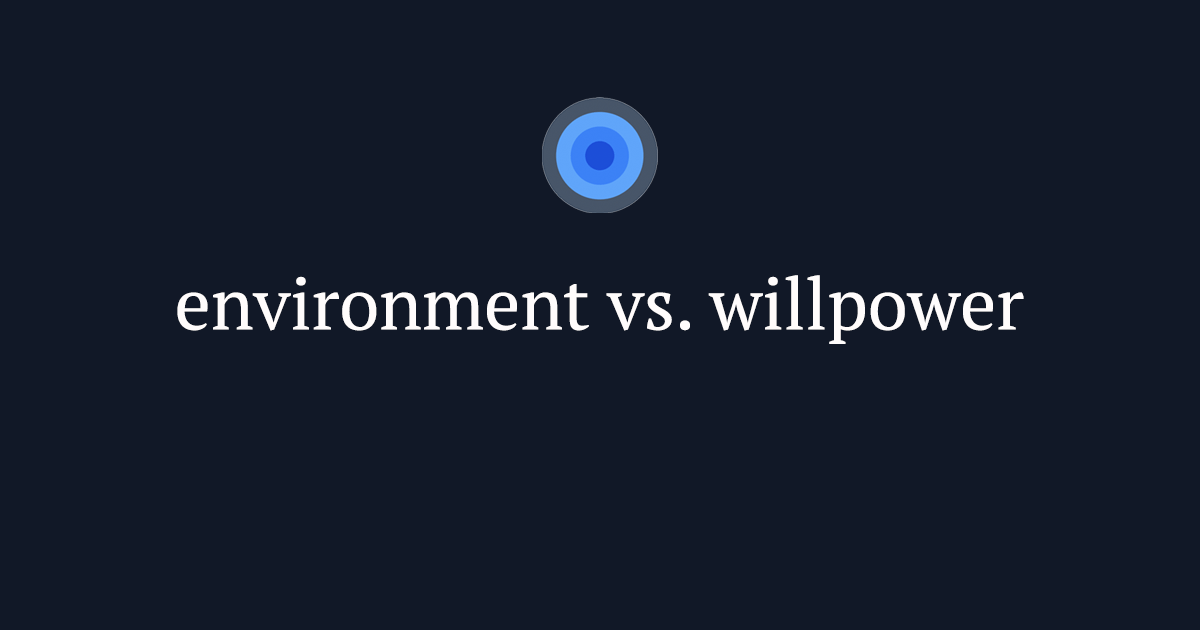- RESULTS OS
- Posts
- Your Workspace Is Killing Your Focus (And What To Do About It)
Your Workspace Is Killing Your Focus (And What To Do About It)
Small Changes to Your Environment That Create Massive Results


Hey RESULTS OS™ Community!
Ever sit down to do important work, only to find your attention pulled in fifteen different directions?
Your workspace might be the culprit.
And BTW, a quick thanks to everyone who responded to last week's email about The Daily Shift™ and Compounding Progress™!
IN TODAY’S EMAIL
Why your desk setup might be sabotaging your best work
The real reason willpower alone is not enough
Three unexpected workspace factors that determine your focus quality
A simple workspace audit you can do in 10 minutes
THIS WEEK’S EXECUTION INTELLIGENCE™
The Invisible Focus Thief
We've all experienced it.
You sit down to tackle your most important work (what I call your First Position Priority™), and somehow two hours disappear with barely any progress to show for it.
What happened?
Sometimes when this happens I start blaming myself for a lack of discipline or focus.
But it might be more about your work environment than anything else.
I've found that my surroundings often have more control over my focus and willpower than I ever realized.
The Willpower Trap
Here's where conventional productivity advice gets it wrong. Almost everything you read tells you that better focus comes from within: better habits, more discipline, stronger time management, etc., all of which can be true.
But there's a fundamental flaw in this thinking: Relying on willpower alone to maintain focus can sometimes feel like you're trying to swim upstream, which is both exhausting and ultimately unsustainable.
If your environment is fracturing your attention, you're fighting a losing battle.
Three Workspace Factors That Shape Your Focus
After years of refining what would eventually become a core piece of Deep Cycle Focus™, I've identified three workspace elements that make or break your ability to maintain high-quality focus:
Visual Triggers
Your eyes control more of your brain than you realize.
What you can see from your workspace sends constant signals about where your attention should go:
Multiple open tabs creating visual anxiety
Notifications popping into view
Physical reminders of unfinished tasks within eyesight
A single adjustment - creating a dedicated space that signals "deep work happens here" with minimal visual distractions - can double your focus effectiveness.
Transition Zones
One of the biggest focus killers is how you move between different types of work.
Most of us jump directly from high-stimulation activities (email, Slack, meetings, etc.) straight into work requiring deep thought.
Your brain can't switch modes that quickly.
Research shows this creates a “focus debt” that takes up to 23 minutes to recover from - a time cost most of us can't afford.
Creating even a small transition zone - a two-minute reset ritual between activities - can dramatically improve your ability to drop into focused states quickly.
Recovery Design
Here's a counterintuitive truth: The key to better focus isn't more focus - it's better recovery.
Most people work until their focus breaks, then feel guilty for needing a break.
This approach steadily degrades your focus quality throughout the day.
The best focus environments intentionally incorporate recovery periods that enhance rather than interrupt momentum.
Instead of waiting until your focus collapses, you strategically include brief recovery periods that keep your focus fresh.
Fix Your Workspace Today
While my complete Deep Cycle Focus™ system includes detailed protocols for optimizing workspaces, here's a simple audit you can do today:
Distraction Inventory
For one work session, put a sticky note on your desk.
Note every time your focus breaks.
Then write down what pulled your attention away.
Was it something you could see?
A notification?
Someone walking by?
This simple awareness exercise reveals your personal focus killers.
Create a Transition Ritual
Before starting important work, take two minutes to:
Close unnecessary tabs and apps
Clear your physical desktop of unrelated items
Take three deep breaths
Write one sentence about what you intend to accomplish
Try the 52/17 Rhythm
Instead of pushing until your focus breaks, work in 52-minute focused sessions followed by 17-minute true breaks. (This specific timing comes from productivity research, but the exact numbers matter less than the deliberate rhythm.)
These simple adjustments create immediate improvements in how much quality work you can accomplish each day.
The Environment Advantage
Here's the most liberating insight about workspace design: When your environment supports focus, concentration becomes your default state rather than a constant battle.
This approach removes the biggest hidden tax on your productivity - the exhaustion that comes from fighting your environment all day.
Your workspace isn't just about aesthetics.
It's a performance tool that either amplifies or undermines your ability to do your best work.
Remember
Your current workspace keeps you busy.
Your results need an environment built for focus.
Most productivity advice tells you to try harder.
RESULTS OS™ transforms your environment to make focus a more natural outcome.
See you next Saturday,
Jack
P.S. What's the biggest distraction in your current workspace?
Hit reply and let me know - I read every message.
When you’re ready, here’s how I can help:
- Request a coaching call
How did you like today's newsletter? |